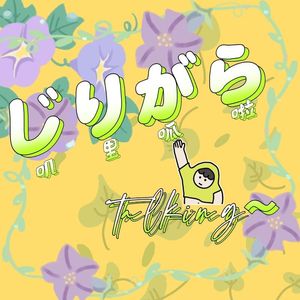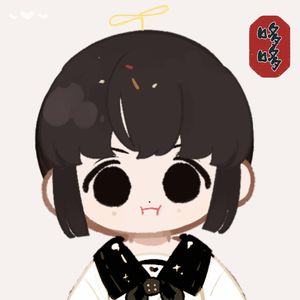






 Vol.54《别那么严肃》
Vol.54《别那么严肃》大家好呀 玩家和哆哆又来给大家分享生活抓马事件嘞。。(希望生活少点抓马我真的谢) 不过真的很开心能和大家分享我们生活中的小事 希望我们都能完美解决生活中的抓马事件 调整好心态 没什么过不去 让我们继续出发叭 生活 还是很美好的嘛 希望我们也 有缘再见啦 hhh下期 (下期真的不一定能见啦) 谢谢大家的收听 (鞠躬) 我们 江湖有期啦~
 Vol.53《别那么严肃》大学生特种兵之路(7)系列完结篇
Vol.53《别那么严肃》大学生特种兵之路(7)系列完结篇快乐的日子总是很短暂 即使一路抓马 可是对于我们来说也是珍贵的回忆呀~ 特种兵旅行系列就暂时和大家告一段落啦 让我们积蓄一段时间 再出发叭 不过旅行停止了 生活可没有停呦 生活中的我们也伴随着无数个抓马事件 咱就是说这一生是消停不了一点儿了(狗头) 《别那么严肃》会继续给大家带来生活中的抓马事件以及生存小tips滴 希望你们可以在《别那么严肃》里好好放松一下 生活已经很苦啦 祝你生活愉快呀~ (我们下期还能见 嘿嘿)
 Vol.52《别那么严肃》特种兵大学生之路(6)
Vol.52《别那么严肃》特种兵大学生之路(6)人在囧途 怎么可能一帆风顺呢 旅行嘛 肯定是会状况百出的啦 你们有没有过走错路的经历嘞 在评论区和大家一起分享一下共同避个雷叭~ 虽然在1949留下了一些小遗憾 但是也同时拥有了下次再来重庆滴理由啦~ 对于玩家和哆哆来说 美食可以治愈一切! 这顿重庆路边摊烧烤是如何治愈我们的嘞 为什么说它是吃了后悔不吃也后悔的捏 老样子 我们下期再见啦~ ps:在河滩的大石头上坐着吹嘉陵江的晚风真的是太太太舒服啦!!!
 Vol.51 魅力非遗,风情歌韵 | 马头琴Morin khuur
Vol.51 魅力非遗,风情歌韵 | 马头琴Morin khuur马头琴,蒙语称为莫林胡尔,是蒙古族的一种传统弓弦乐器。它是蒙古族最具代表性的乐器之一。 从某种程度上说,马头琴是蒙古族传统音乐文化的代表。它入选了联合国教科文组织公布的“人类口头和非物质文化遗产”代表作名录,也被列在“第一批国家级非物质文化遗产”名录中。 The morin khuur, also called the horsehead fiddle, is a traditional Mongolian bowed stringed instrument. It is one of the most representative musical instruments of the Mongolian nationality. To a certain degree, the morin khuur is the symbol of Mongolian traditional music culture. The morin khuur is one of the Masterpieces of the Oral and Intangible Heritage of Humanity identified by UNESCO. It is also included in the list of “ the first batch of state-level intangible cultural heritage” . Construction The instrument consists of a trapezoid wooden-framed sound box to which two strings are attached. It is held nearly upright with the sound box in the musician’ s lap or between the musician’ s legs. The strings are made from hairs from nylon or horses’ tails, strung parallel, and run over a wooden bridge on the body up a long neck, past a second smaller bridge, to the two tuning pegs in the scroll, which is usually carved into the form of a horse’ s head. 该乐器由一个梯形木制框架共鸣箱组成,上面连接着两根琴弦。马头琴直立地放在音乐家的膝盖上或音乐家的双腿之间。琴弦由尼龙或马尾的毛发制成,平行串起,穿过身体上的琴马,沿着长长的琴身,经过第二个较小的琴马,来到琴头中的两个琴栓,琴头通常雕刻成马头的形状。 The Status in Mongolian Culture The morin khuur is the best instrument suitable for playing the ancient long melody folk song of Mongolia. It can accurately express the life of the Mongolians, such as vast grassland, howling wind, sad mood, galloping horse hooves, joyful pastoral songs, etc. 马头琴是适合演奏蒙古古代长调的最好的乐器,它能够准确地表达出蒙古人的生活,如:辽阔的草原、呼啸的狂风、悲伤的心情、奔腾的马蹄声、欢乐的牧歌等。
 Vol.50 魅力非遗,风情歌韵 | 长调Long Melody Folk Song
Vol.50 魅力非遗,风情歌韵 | 长调Long Melody Folk Song在悠长而绚丽的历史长河中,蒙古族长调民歌从继承最早期的北方游牧民族草原牧歌开始,历经不同历史时期、不同生产生活方式的改变,逐步发展到今天成为我国宝贵的民族文化遗产,走过了两千多年的悠悠岁月。长调以草原人特有的语言讲述着蒙古民族对历史文化、文学艺术、宗教习俗、世界观、人生观、道德观、哲学和美学的感悟,是蒙古歌唱艺术最高成就的艺术形式被誉为"草原音乐活化石" 。 2005年11月25日,联合国教科文组织在巴黎总部宣布了第三批"人类口头和非物质遗产代表作",中国、蒙古国联合申报的"蒙古族长调民歌"荣列榜中。 In the long and splendid history, long melody folk song has been developed into a valuable national cultural heritage in China for more than 2000 years, starting from inheriting the earliest grassland pastoral songs of the northern nomad, through changes in different historical periods and different ways of production and life. Long melody folk song of Mongol nationality has the indomitable vitality of the Mongolians, it tells Mongolians’ feelings about history and culture, literature and fine arts.religious custom, the world outlook, conception of life, morality, philosophy and aesthetics. It is an art form of the highest achievement in Mongol nationality art of singing. It is called " the live fossil of prairies music". On November 25, 2005, UNESCO announced the third batch of "representative works of human oral and intangible heritage" at its headquarters in Paris, and the "long melody folk song" jointly declared by China and Mongolia were included in the list. Common themes of long melody folk song: 1. Sing on the grassland - The vast grassland is the cradle of long melody folk song, while long melody folk song are musically oriented grasslands. As a product of Mongolian grassland culture, long melody folk song are deeply imprinted with the grassland in both content and form. 2. Praise the Steed - In the development process of grassland civilization, the steed is a close companion of the Mongols, playing an irreplaceable role in grazing labor, war, and daily life. Since the 13th century, the Mongols have marched onto the stage of history, relying on the four hooves of Mongolian horses to not only rewrite their own national history, but also create remarkable achievements that shook the world on the Eurasian continent. In a sense, a touching Mongolian history is actually created jointly by humans and horses. 3. Gratitude mothers - in a special sense, as a nomad, Mongols have been active in a large space and time from generation to generation, and women bear special responsibilities in maintaining families, nurturing children, and inheriting the achievements of civilization. The long-term wars and social turmoil in Mongolian history have further increased the burden on the mother's shoulders. Therefore, a large number of songs expressing feelings for mothers have emerged in the field of long melody folk song. 4. Celebrate heroes - One of the important contents of Mongolian grassland culture is to uphold bravery and admire heroes. From vast heroic epics to beautiful and melodious long melody folk song, they warmly praise heroic behavior and are full of the spirit of heroism. 5. Sing love - among the traditional folk songs of all ethnic groups, love songs account for the majority in number, and Mongols is no exception. This type of song has a beautiful melody, complete structure, simple and sincere emotions, expressing the Mongolian people's desire for beautiful love, and has high aesthetic and ideological value. Nevertheless, either traditional unique form or traditional singing form of long melody, they need to make innovation with the time along with the changes of general social environment.Only in this way, long melody -the treasures of art, which was passed on through thousands of years, can't die out. And it can be in step with the pulse of the times. It will re-blossom vivid coloring gloss on the way of national resurgence.
 Vol.49《晚安周三》没有锁的门
Vol.49《晚安周三》没有锁的门不知道你童年的时候有没有一扇没有锁的门困住了你所有的小心思, 不知道你是不是在成年之后一直努力着给自己心中的那扇门加上一把锁,再加上一把锁。 今天不想传播焦虑,只想说如果你能够亲自让自己拥有一扇带锁的门,但是又可以随时拥有,打开这把锁的勇气,那真是太酷啦!
 Vol.48 魅力非遗,风情歌韵|呼麦Hoomei
Vol.48 魅力非遗,风情歌韵|呼麦Hoomei呼麦是蒙古族声乐艺术的代表性门类,是一种利用个人嗓音的低音持续声部产生的泛音,与低音持续声部形成两个或以上声部的和声演唱艺术。在中国各民族民歌中,它是独一无二的。 呼麦以赛马、射箭、摔跤等大型赛事活动或祭祀祖先、重大集会等场合为依托,与民众的社会实践息息相关。 本期节目为大家介绍内蒙古非遗文化第一期——呼麦。 It was a song from an ancient people. People sing to the mountains and forests, pray to the sky and the grasslands, and they make a heavenly sound and become one with nature. Those who herd sheep and ride horses among the blue sky and green grass sing with their souls day after day. It was these people who gave birth to this natural method of singing--From one throat, two voices protrude at the same time. Their pitches and timbres are different, and one matches the other. This melody will always exceed your expectations, and this natural sound is naked and heart-wrenching... This art, known as "guttural singing", instantly became a mysterious pyramid in the world music landscape.Hoomei was inscribed on the first list of world intangible cultural heritage in May 2006 and successfully inscribed on the list of world intangible cultural heritage in October 2009. Definition of HoomeiThe word "Hoomei" is a transliteration of the Mongolian pronunciation and means "throat". Because this form of performance is mainly done with the throat, people call it guttural art.Hoomei, known as "Haolin Chaoer" in the folklore, is the most primitive guttural art of human beings, and the vocal technique is quite difficult. Hoomei is a difficult artistic expression in which a person expresses artistic conception by emitting multiple overtones at the same time. It can be a mellow bass that imitates mountains, waterfalls, vast grasslands or eulogies with eulogies, or a mantra storytelling performance that perfectly combines with overtones, or an overtone melody that interprets beautiful rhythms. Combined with the above characteristics, Hoomei is also known as the "peak of overtones".Because the art of Hoomei has a strong uniqueness, both the domestic music industry and the international music world have paid great attention to Hoomei. In addition, Hoomei has also a long history and is pronounced in a way that is unique in the world. Production of Hoomei There is no specific record of the origin of Hoomei, but there are many theories about the origin of Hoomei. Mongolian believe that Hoomei was formed by their ancestors imitating the sound of waterfalls deep in the mountains and is a way to live in harmony with nature. Some people believe that Hoomei is a religious shamanism in the ancient Genghis Khan period, and the religion used a low low Hoomei to lead and recite scriptures when offering heaven and praying scriptures, which coincides with the historical background of the time. Some people also think that the ancient Mongolians because they love riding and shooting, and their character is heroic and good at fighting, so they should sing in unison to boost morale before the battle, or use the chorus to express joy when the prey is harvested abundantly, so that the way of singing in unison is more people involved, so it looks imposing, and everyone studied in the later period so that they formed Hoomei. Type of HoomeiHoomei is pronounced in a peculiar way, which leads to its repertoire not being so rich. However, it does not mean that its performance content is not rich, on the contrary, its rich performance content vividly reflects the state of harmony between man and nature. At the same time, Hoomei also expresses people's rich inner world, which is very connotative. According to statistics, the Hoomei repertoire can be divided into three types: praising nature, singing to animals, and Mongolian admiration for the steppe and horses. Among the representative repertoire, "Ode to the Altai Mountains" celebrates nature; "Cuckoo" and "Black Walking Bear" express the love of hunting peoples for animals; "Four-Year-Old Sea Tumor Horse" embodies the Mongolian praise of the grassland. In terms of musical style, these types of Hoomei are usually short keys, and sometimes long tunes may occur. 以上就是今天节目的全部内容哈,本栏目我们还会持续更新,喜欢的朋友们记得订阅😊
 Vol.47《别那么严肃》特种兵大学生之路(5)
Vol.47《别那么严肃》特种兵大学生之路(5)俗话说的好 智者不入爱河 成人洗脚按摩 来到了拥有著名按摩文化的川渝之地——重庆 怎么能不体验一把按摩呢 在这里插一嘴,玩家觉得呀,我们还是要有一些个自己的小金库的,这样在出来消费的时候呢就会特别的有底气,并且呢在消费过这些娱乐活动之后呢,会刺激你更加的努力来赚取更多的money~ 所以我们在按摩店里到底都经历了哪些呢 嘿嘿 答案就在本期的节目之中啦 待我下次再去重庆之时,一定会再去体验一下按摩文化滴! 不过这人呐也不能高兴的太早,开心的消费过后呢,我们就迎来了生活的狠狠一记重击 那到底是发生了什么呢? 老样子,我们下期再见啦hhh
 Vol.46 世界母亲节大盘点「日韩点心局」
Vol.46 世界母亲节大盘点「日韩点心局」“妈妈”是一个特别的词汇, 在复杂的世界语言体系中, 如果仔细的研究, 你会发现几乎所有国家都有“mama”这个发音, 而这个词在不同的语言中所表达的意思也都是孩子对母亲的呼唤。 虽然各个国家的母亲节日期不尽相同, 但是每一个孩子对母亲的感谢与思念是一样的, 所以今天你要记得跟妈妈说节日快乐呀!
 Vol.45 听说神无法无处不在,所以创造了妈妈
Vol.45 听说神无法无处不在,所以创造了妈妈怀念儿时您温暖怀抱, 最大愿望是您永远不老, 内心珍藏你亲切微笑, 祝全天下所有的妈妈日子越过越好! 母亲节快乐,天天快乐!
 Vol.44《别那么严肃》特种兵大学生之路(4)
Vol.44《别那么严肃》特种兵大学生之路(4)乱七八糟的生活真的急需一个长沙罗森便利店的土豆泥沙拉解救! 本期的三过罗森进不去 再次赶路之追上了地铁末班车 还有4号车厢的百米冲刺 咱就是说 这辈子 你们有没有为了什么东西而拼命、奔跑过? 一起分享在评论区看看谁的更抓马吧hhh 顺便预告下期的目的地——重庆 山城我们来啦! (前期拖更太久嘞,从现在开始就疯狂加更,持续给大家输出我们的抓马旅程,千万别错过里面的小tips呦~)
 Vol.43《别那么严肃》特种兵大学生之路(3)
Vol.43《别那么严肃》特种兵大学生之路(3)好久不见 大家五一玩得开心嘛 都去哪里玩了呀? 本期给大家分享了一个非常重要的tip! 还有长沙的美食安利 如果你愿意的话 就把你们在旅行当中收获的一些tips也分享在评论区吧~
 Vol.42《晚安周三》加油老妹初长成
Vol.42《晚安周三》加油老妹初长成从初中叛逆时期过来的宝子们集合,快来照镜子!! 是不是曾经的你们也和家长有着说不清的矛盾困扰,也因此而烦恼叛逆过,可是现在回头看看,却觉得无比亲切和怀念,甚至遇到什么事儿也主动想要跟爸爸妈妈分享了。 少了高考成绩,分数这些根本矛盾之后,家庭一瞬间就变和谐了,但是这背后又到底隐藏着什么样的原因?今天哆哆就跟你聊一聊
 Vol.41「日韩点心局」韩国身份证上的汉字?这很难评
Vol.41「日韩点心局」韩国身份证上的汉字?这很难评不知道你有没有观察过韩国朋友的身份证,如果你见到,无论你学没学过韩语,都能够轻松的叫出他们的名字,并不是因为你突然打通了任动二脉,仅仅是他们的身份证名字后面都用汉语标注好了。 这到底是出于什么原因一向表明自己历史悠久的韩国同胞又为什么会允许汉字赤裸裸的躺在自己的身份证上?这真的很难评。 今天哆店长带你深度了解一下。韩国人身份证上的汉字,还有韩国人与汉字那些剪不断理还乱的关系吧
 Vol.40 文化读书频道《我们仨》
Vol.40 文化读书频道《我们仨》她是最贤的妻,最才的女。她写道:现在我们三个失散了。剩下的这个我,再也找不到他们了。我只能把我们一同生活的岁月,重温一遍,和他们再聚聚。 人世间不会有小说或童话故事那样的结局: “从此,他们永远快快活活地一起过幸福的生活”。 人间没有单纯的快乐。快乐总夹带着烦恼和忧虑,人间也没有永远。 他发愿说:“从今以后,咱们只有死别,不再生离。” 我一个人,怀念我们仨。 老人的眼睛是干枯的,只会心上流泪。 我曾做过一个小梦,怪他一声不响地忽然走了。他现在故意慢慢走,让我一程一程送,尽量多聚聚,把一个小梦拉成一个万里长梦。这我愿意。送一程,说一声再见,又能见到一面。离别拉得长,是增加痛苦还是减少痛苦呢?我算不清。但是我陪他走的愈远,愈怕从此不见。 我们这个家,很朴素;我们三个人,很单纯。我们与世无求,与人无争,只求相聚在一起,相守在一起,各自做力所能及的事。碰到困难,我们一同承担,困难就不复困难;我们相伴相助,不论什么苦涩艰辛的事,都能变得甜润。我们稍有一点快乐,也会变得非常快乐。 一九九七年早春,阿瑗去世。一九九八年岁末,钟书去世。我们三人就此失散了。就这么轻易地失散了。“世间好物不坚牢,彩云易散琉璃脆”。现在,只剩下了我一人。 我清醒地看到以前当做“我们家”的寓所,只是旅途上的客栈而已。家在哪里,我不知道,我还在寻觅归途。
 217
217 19
19